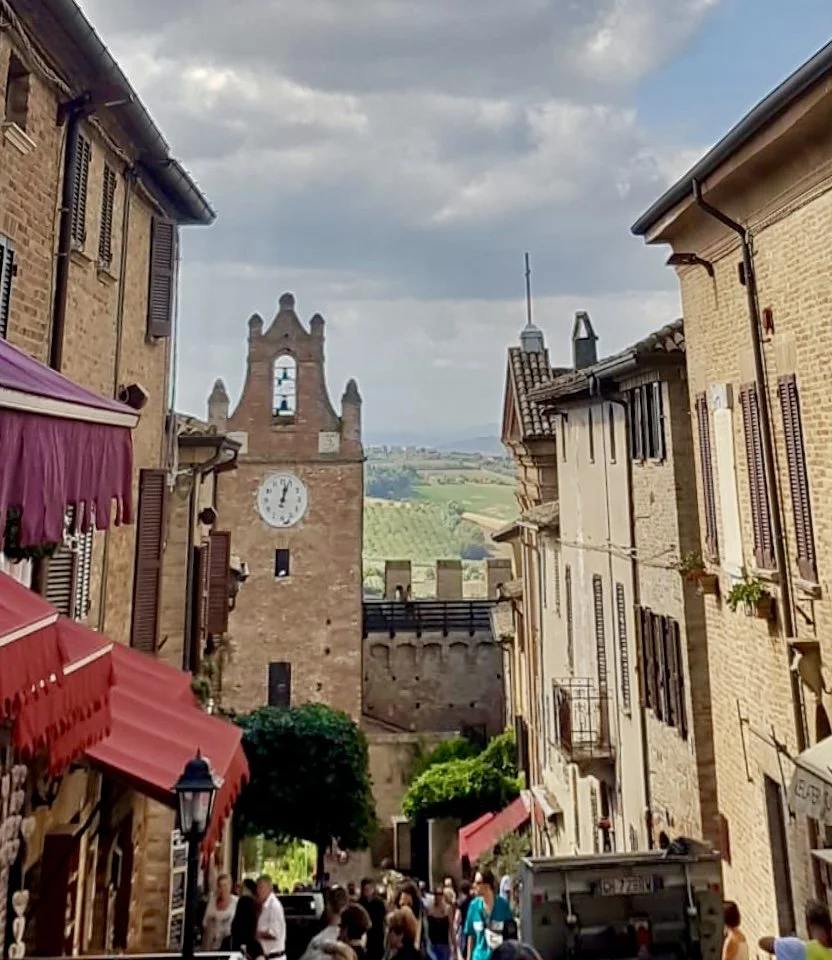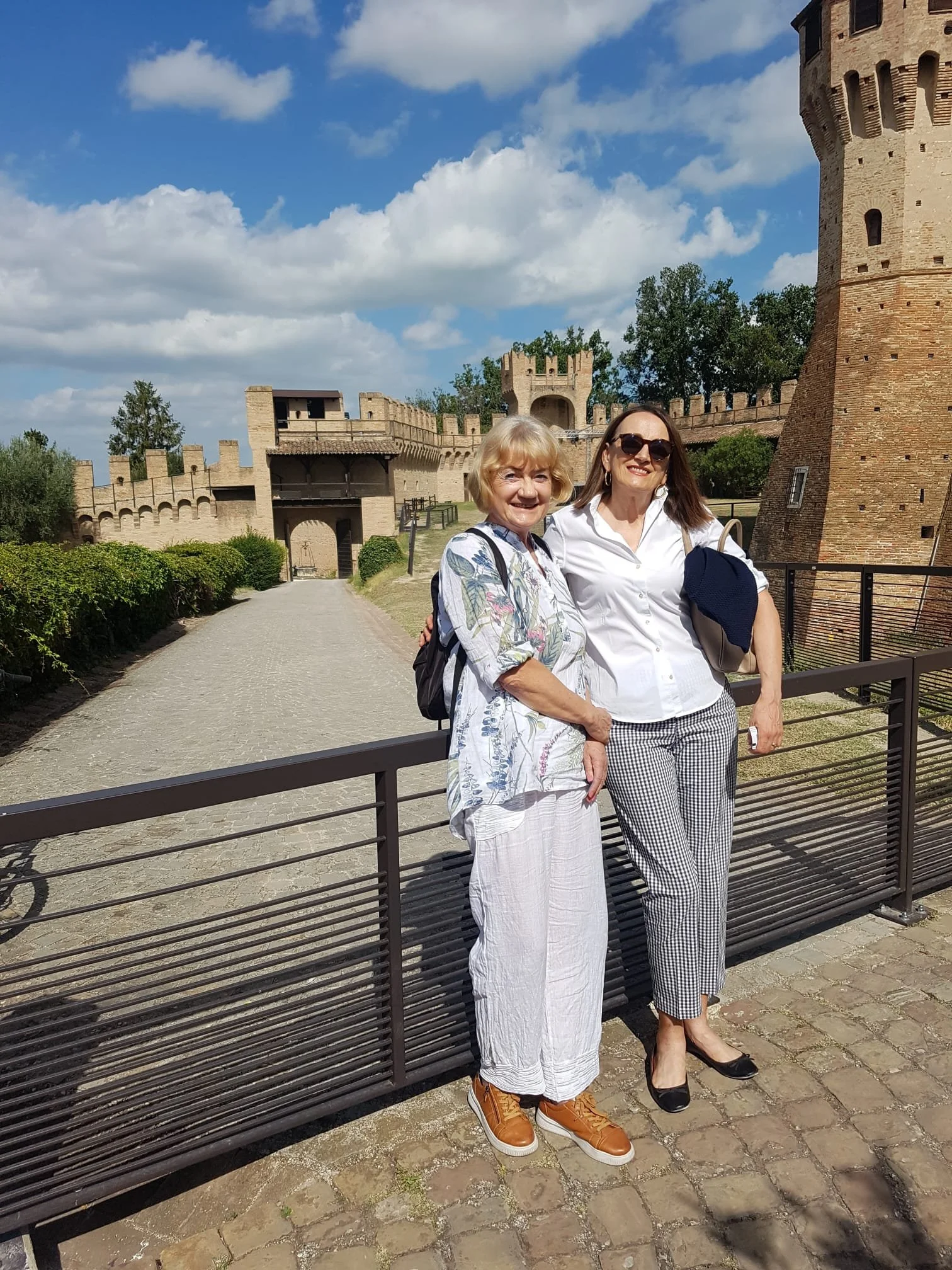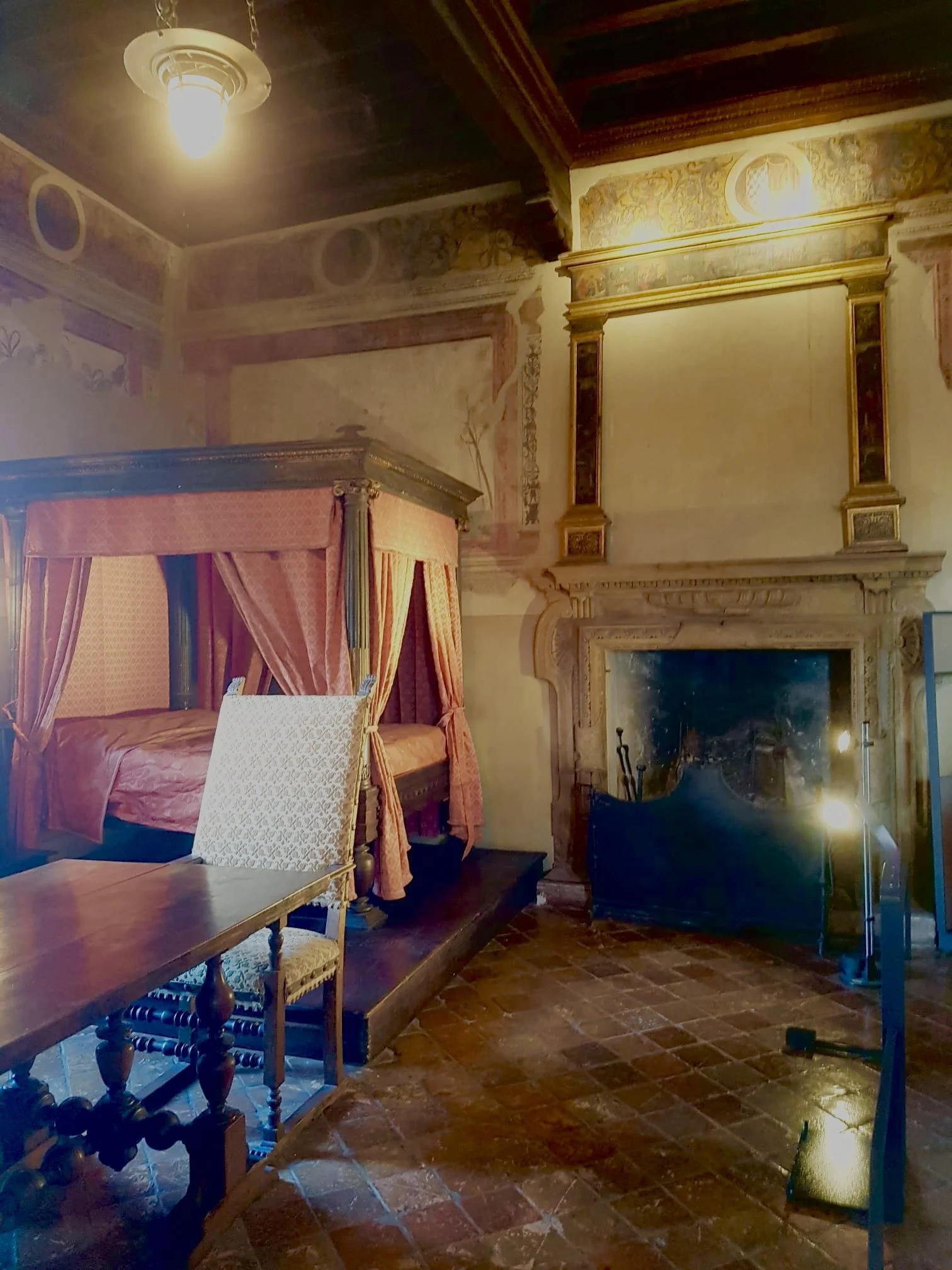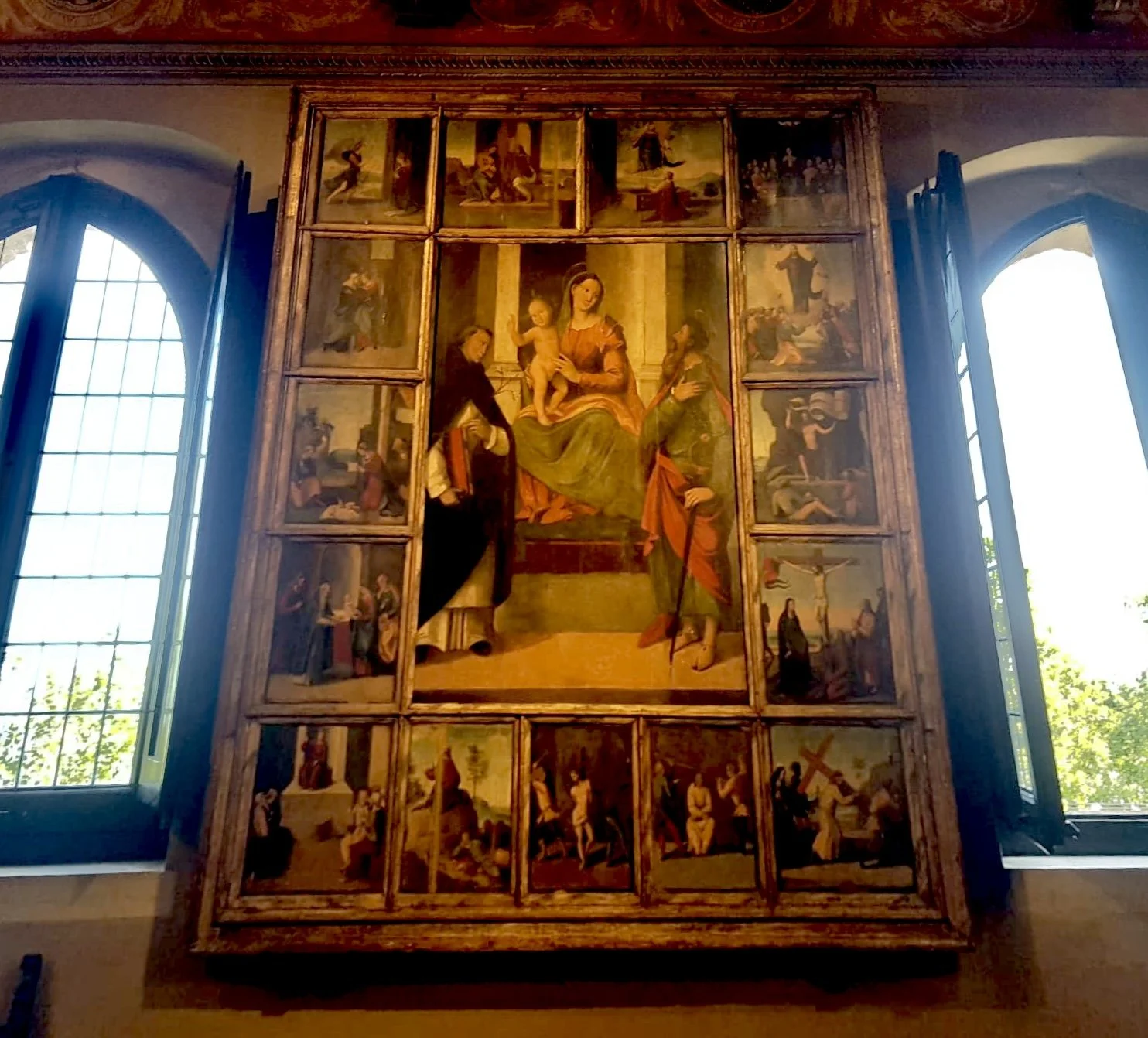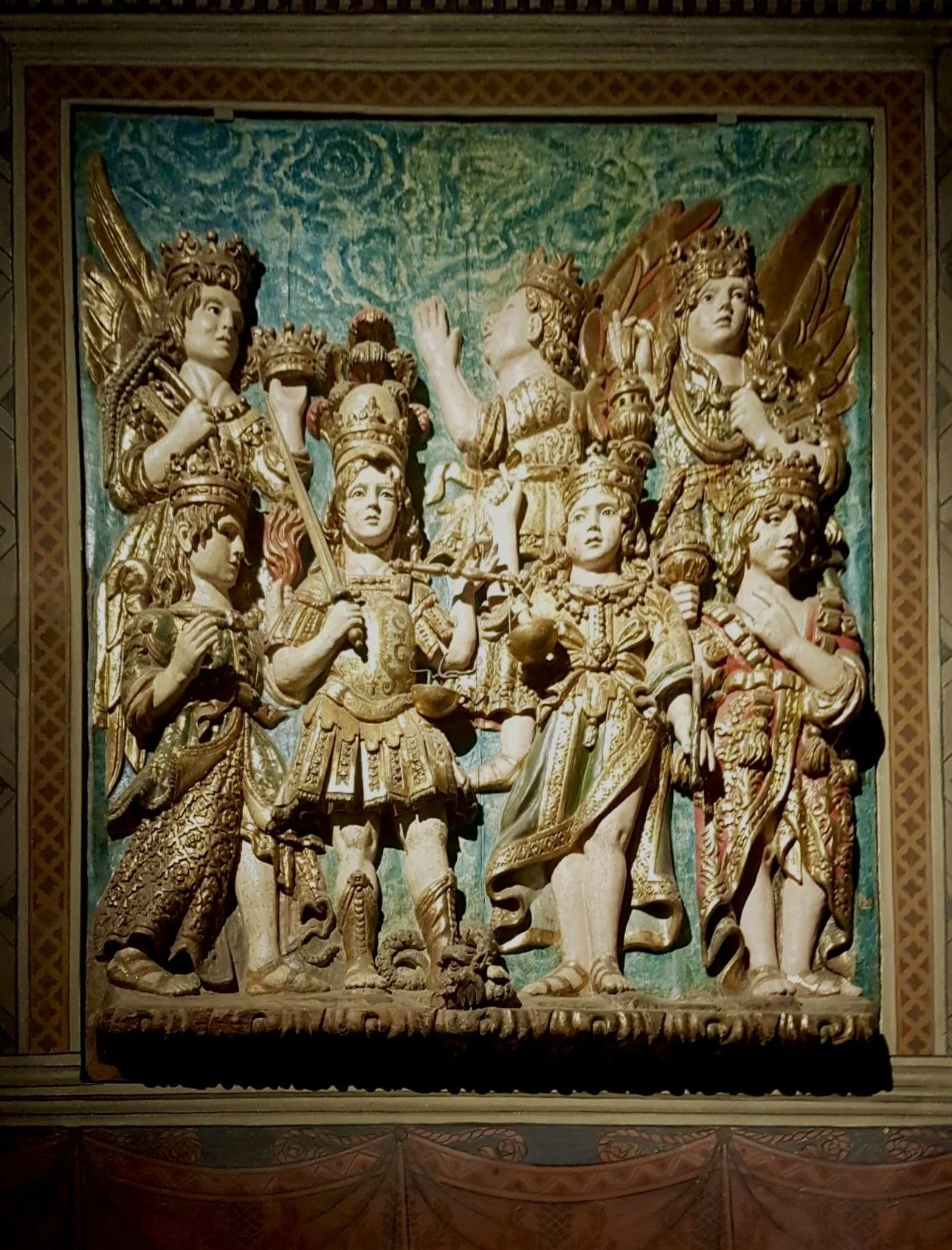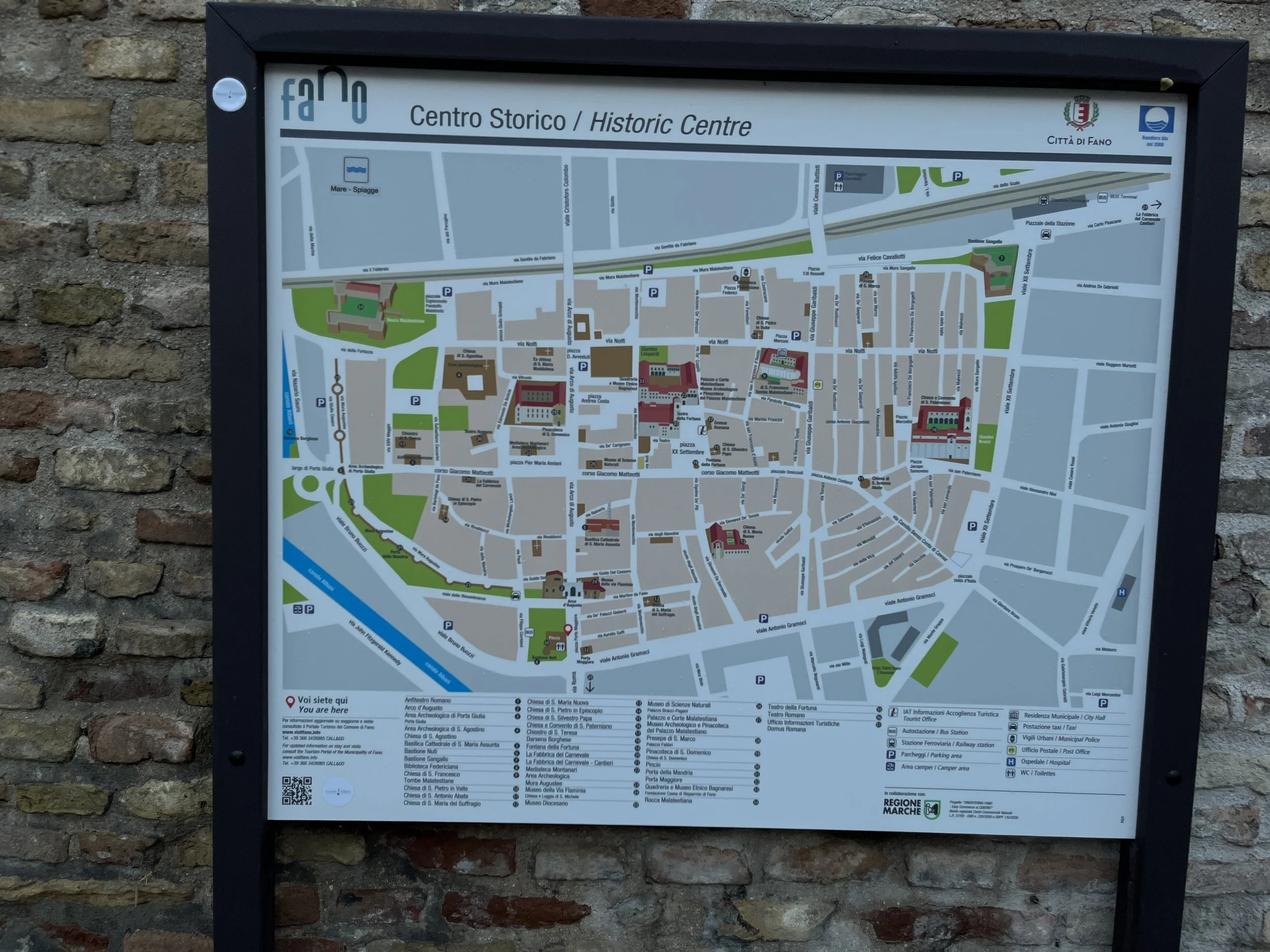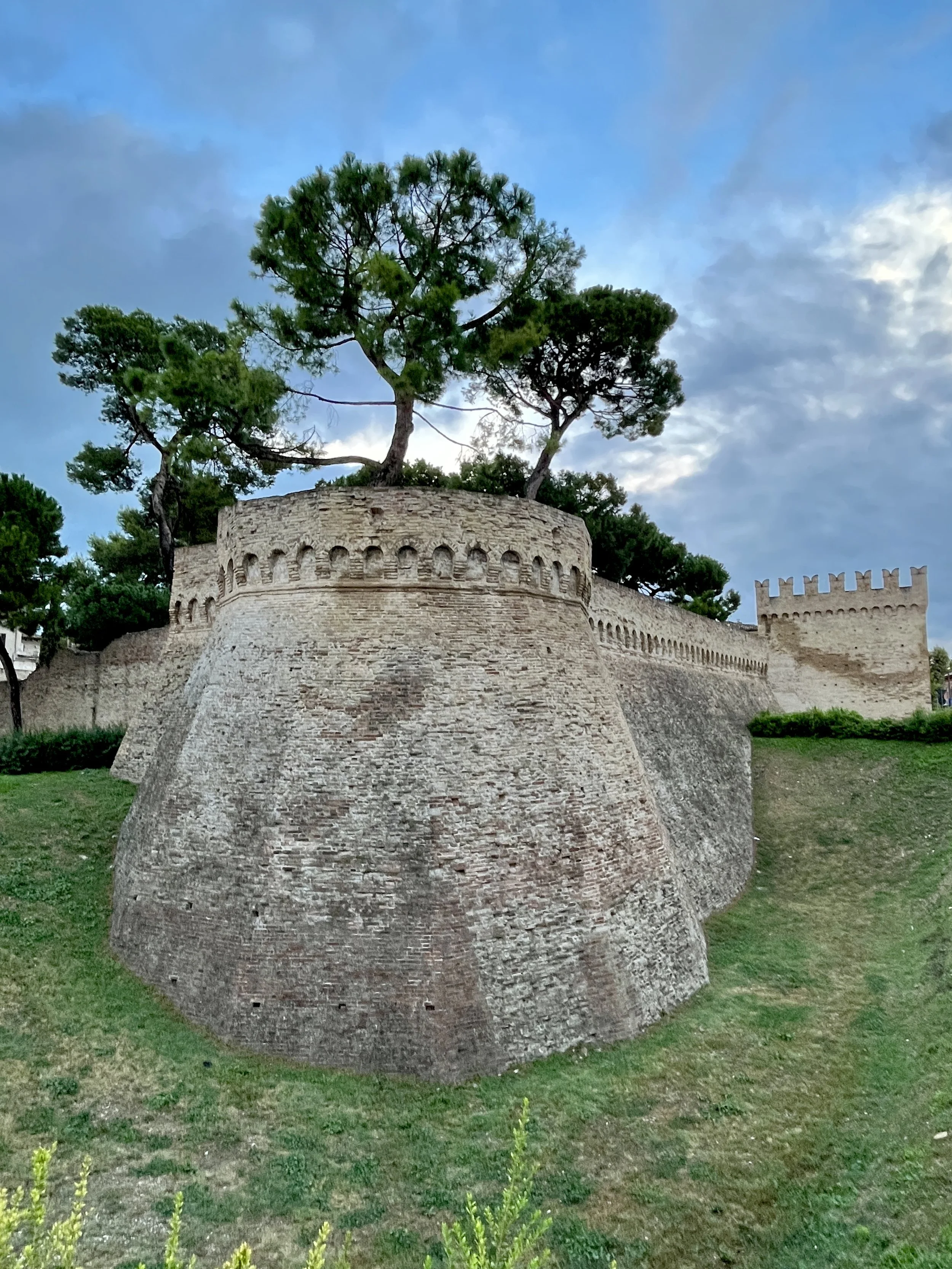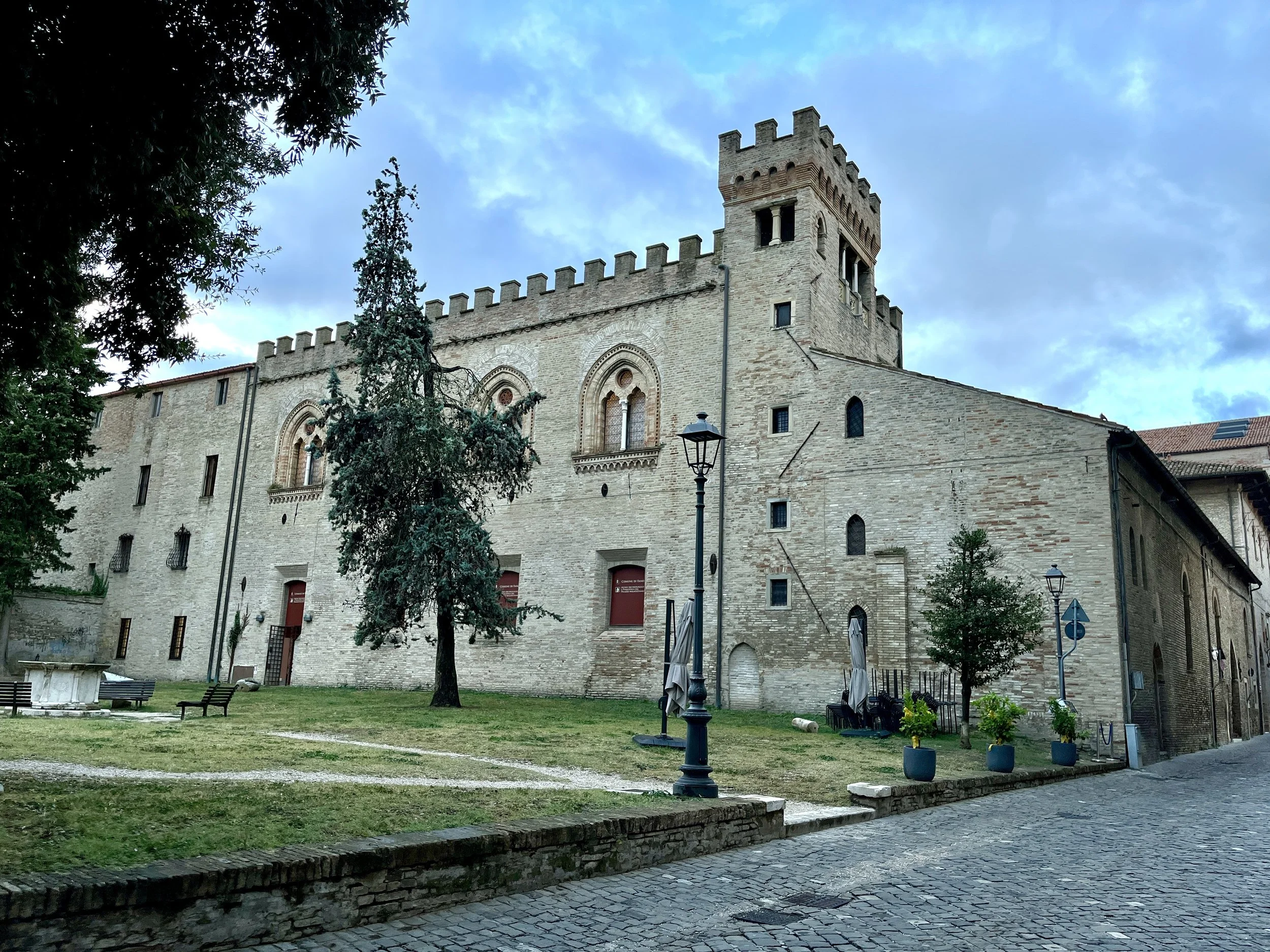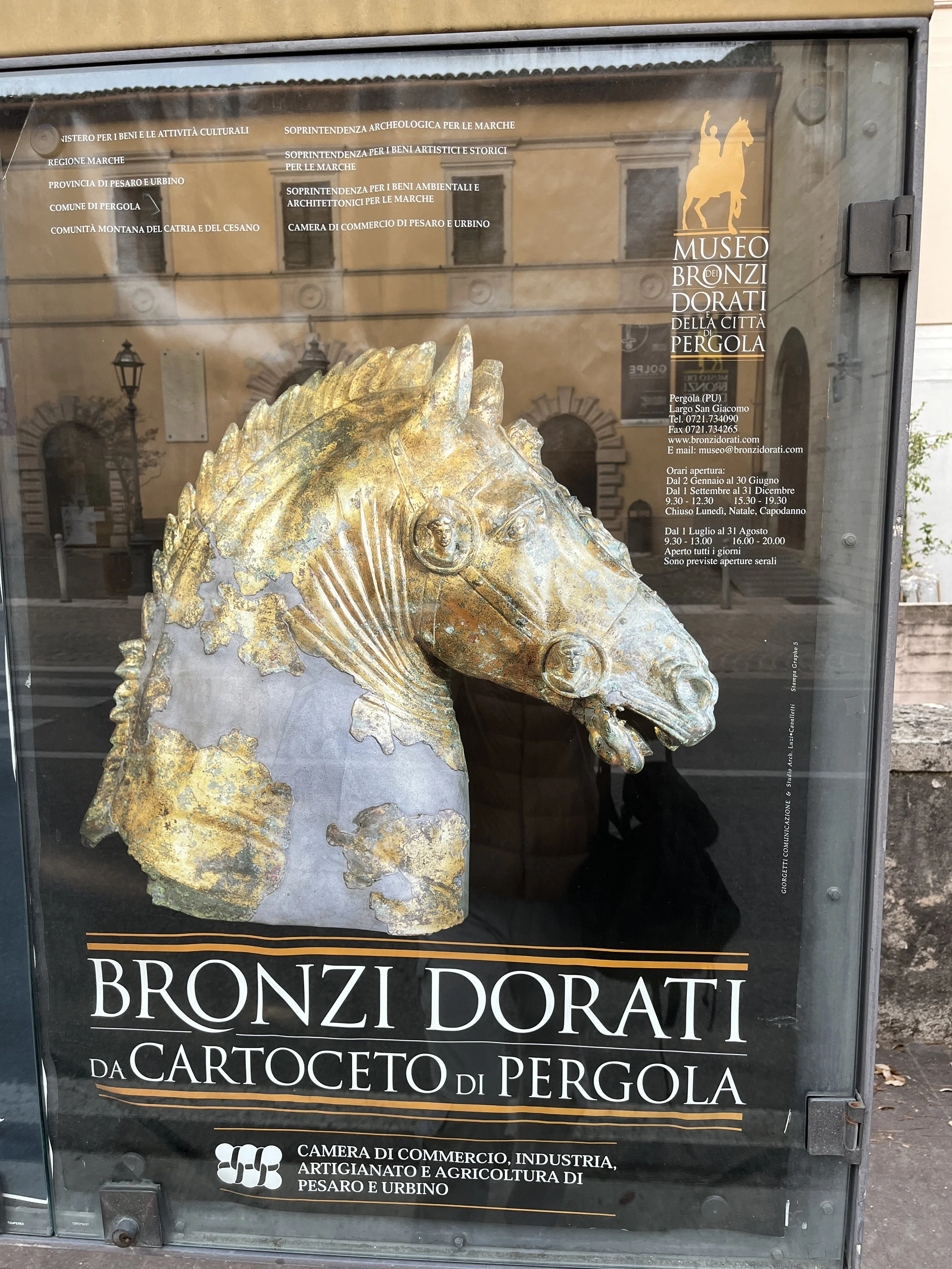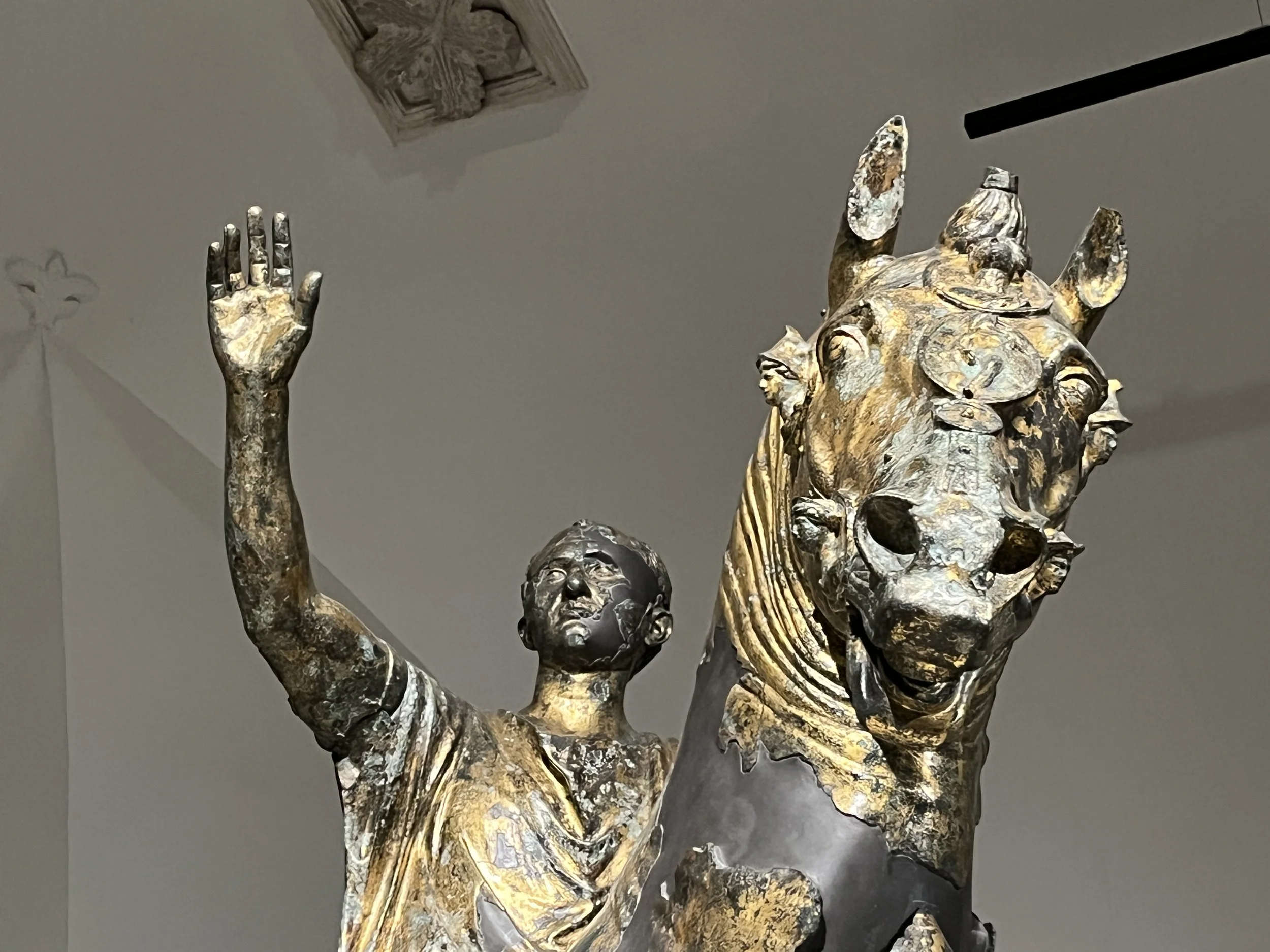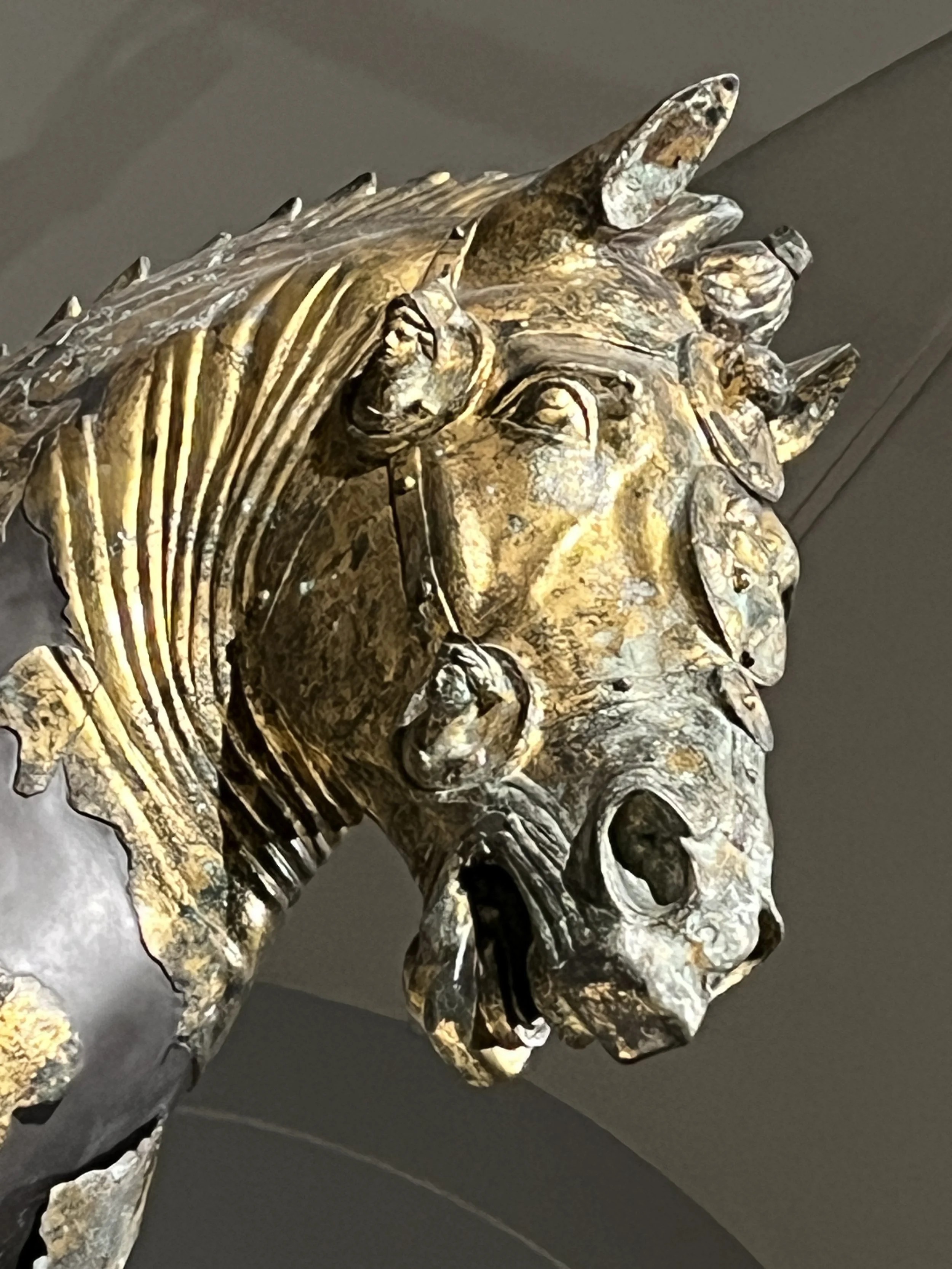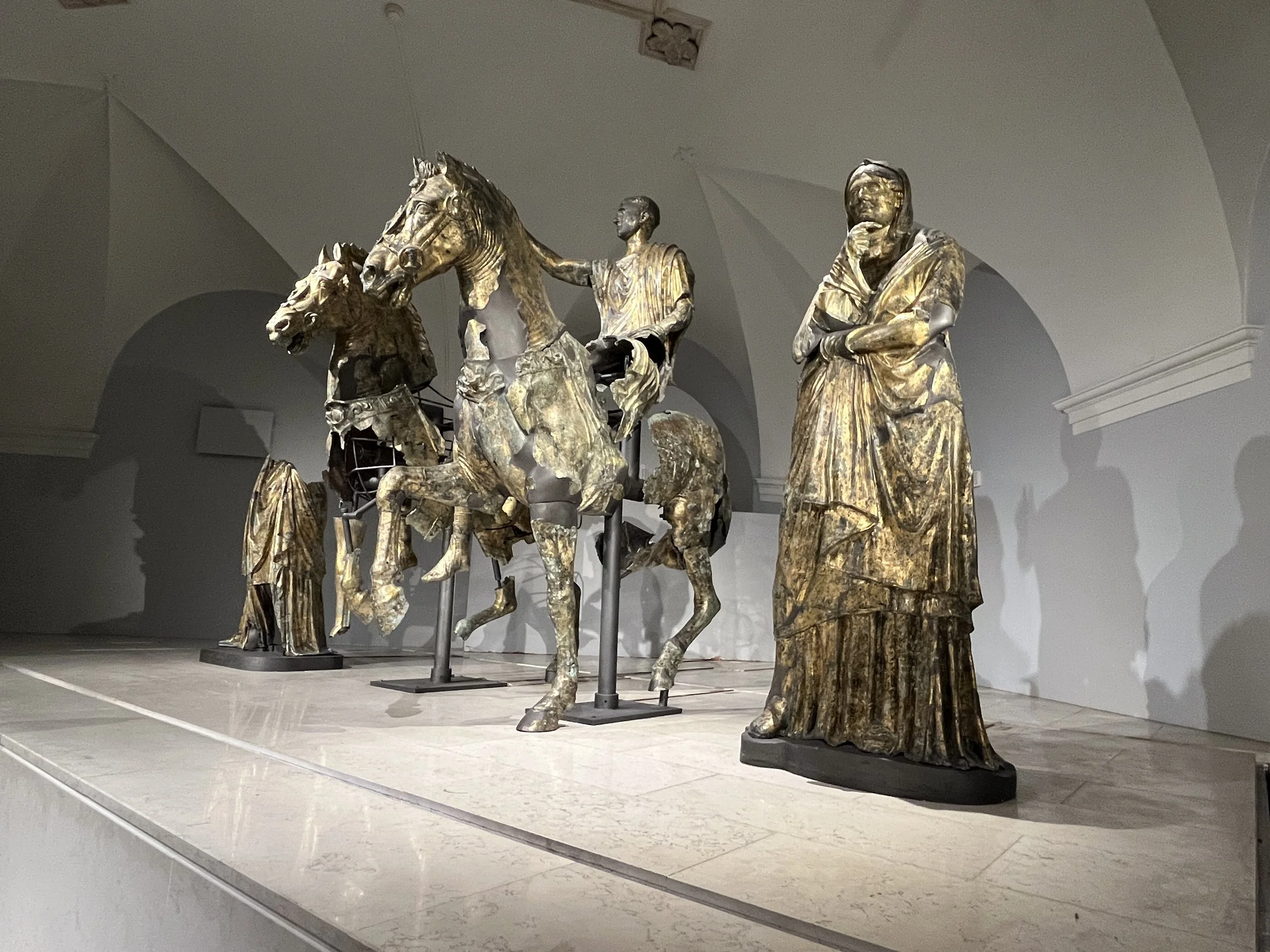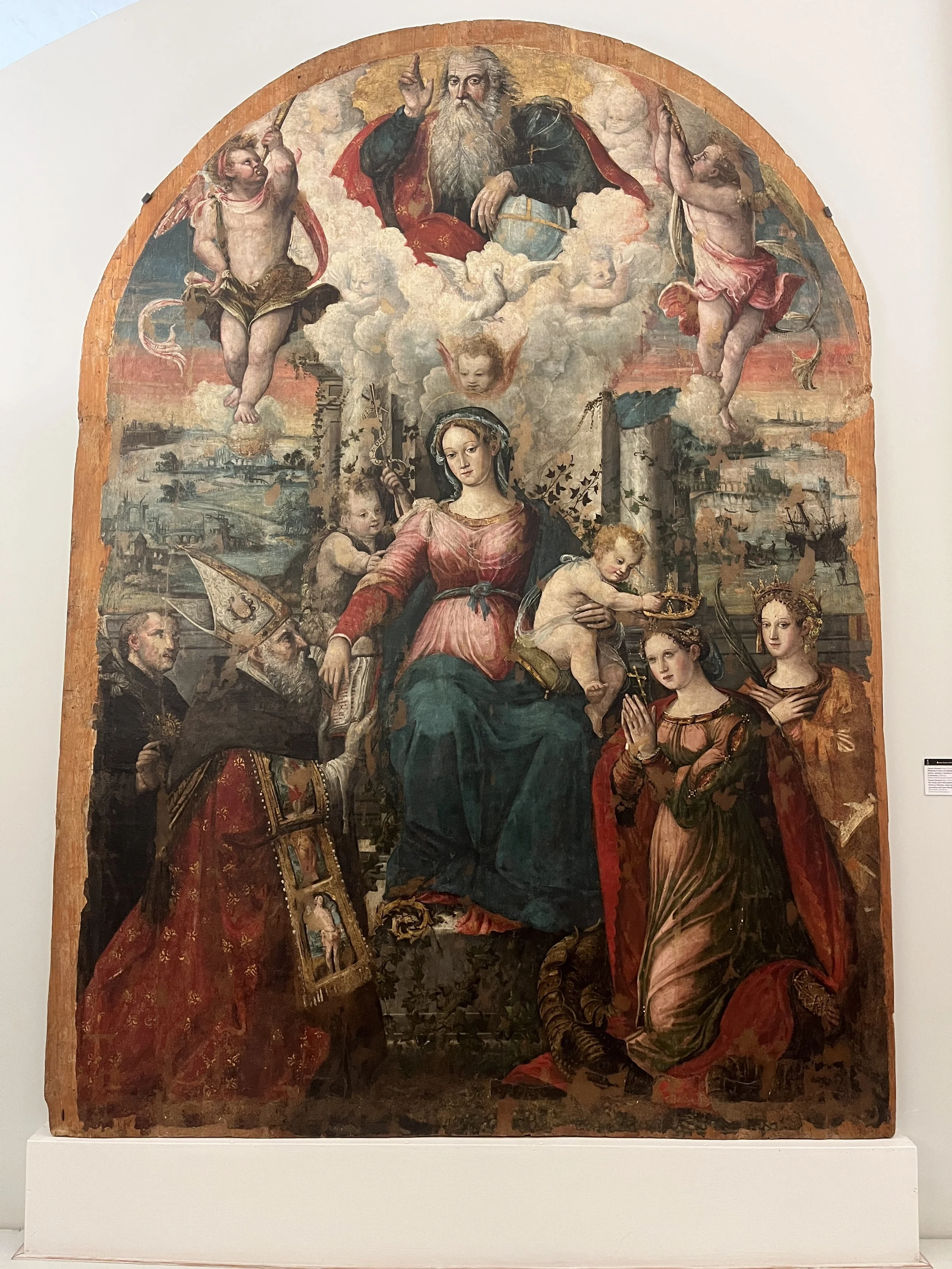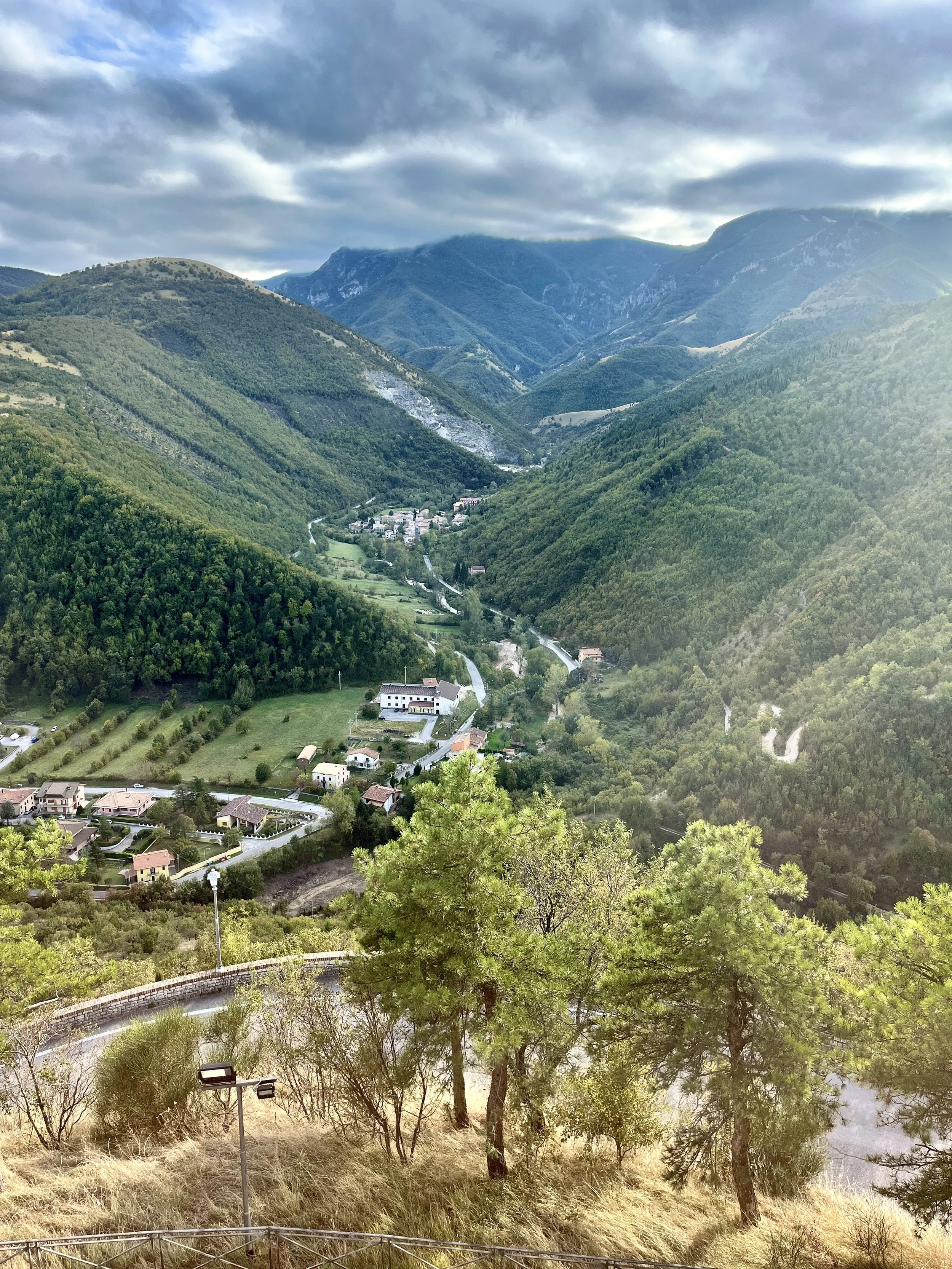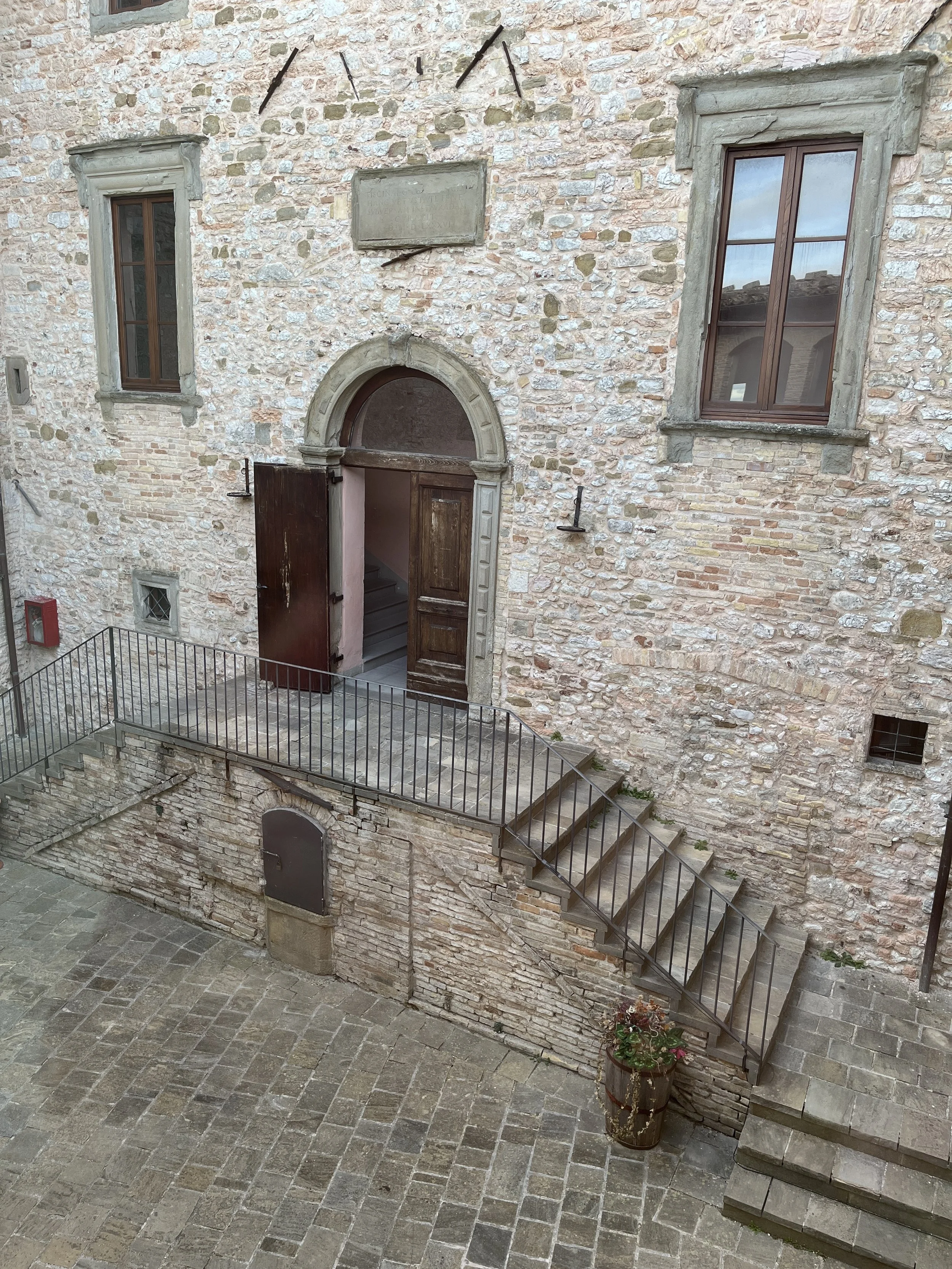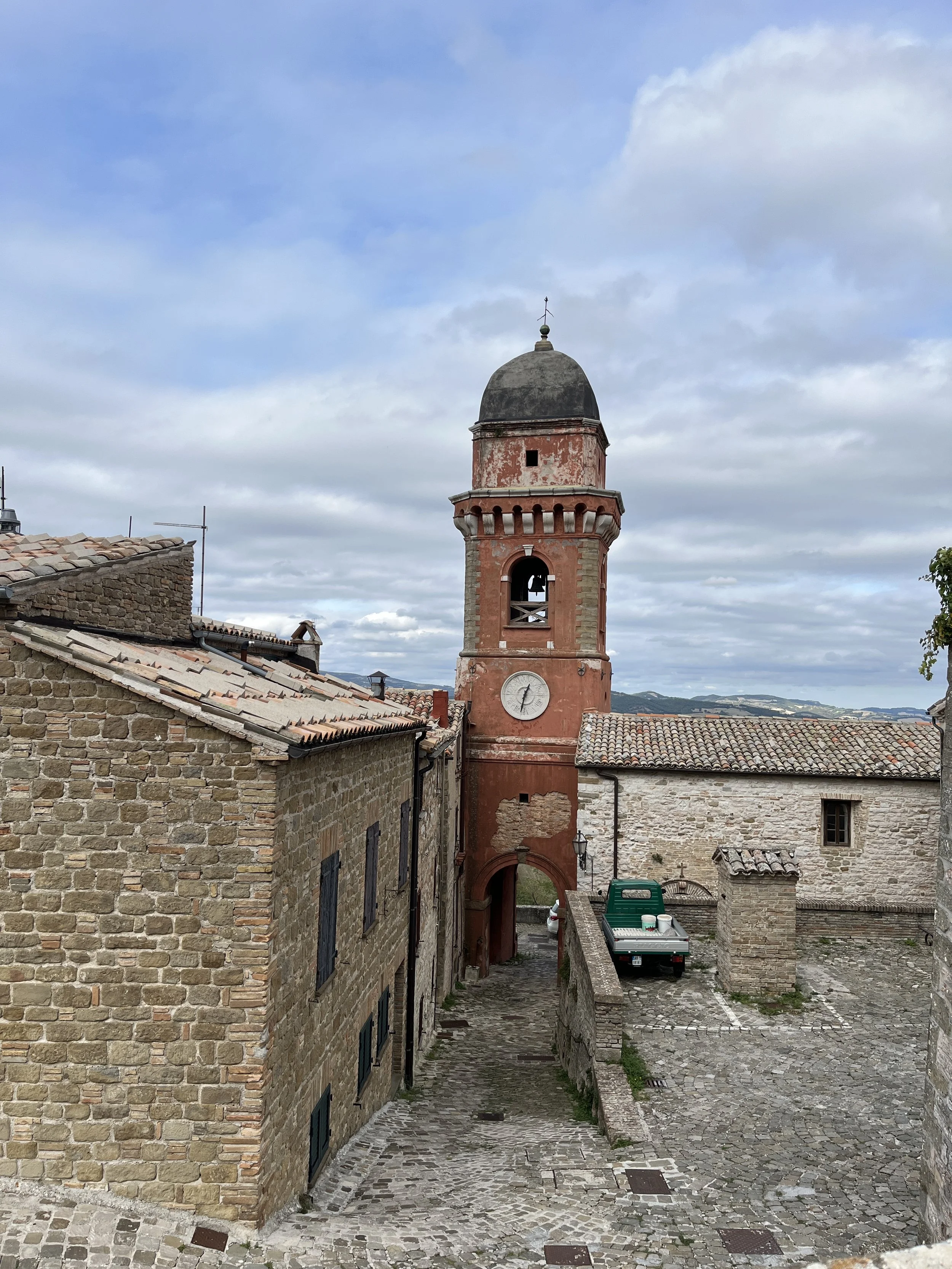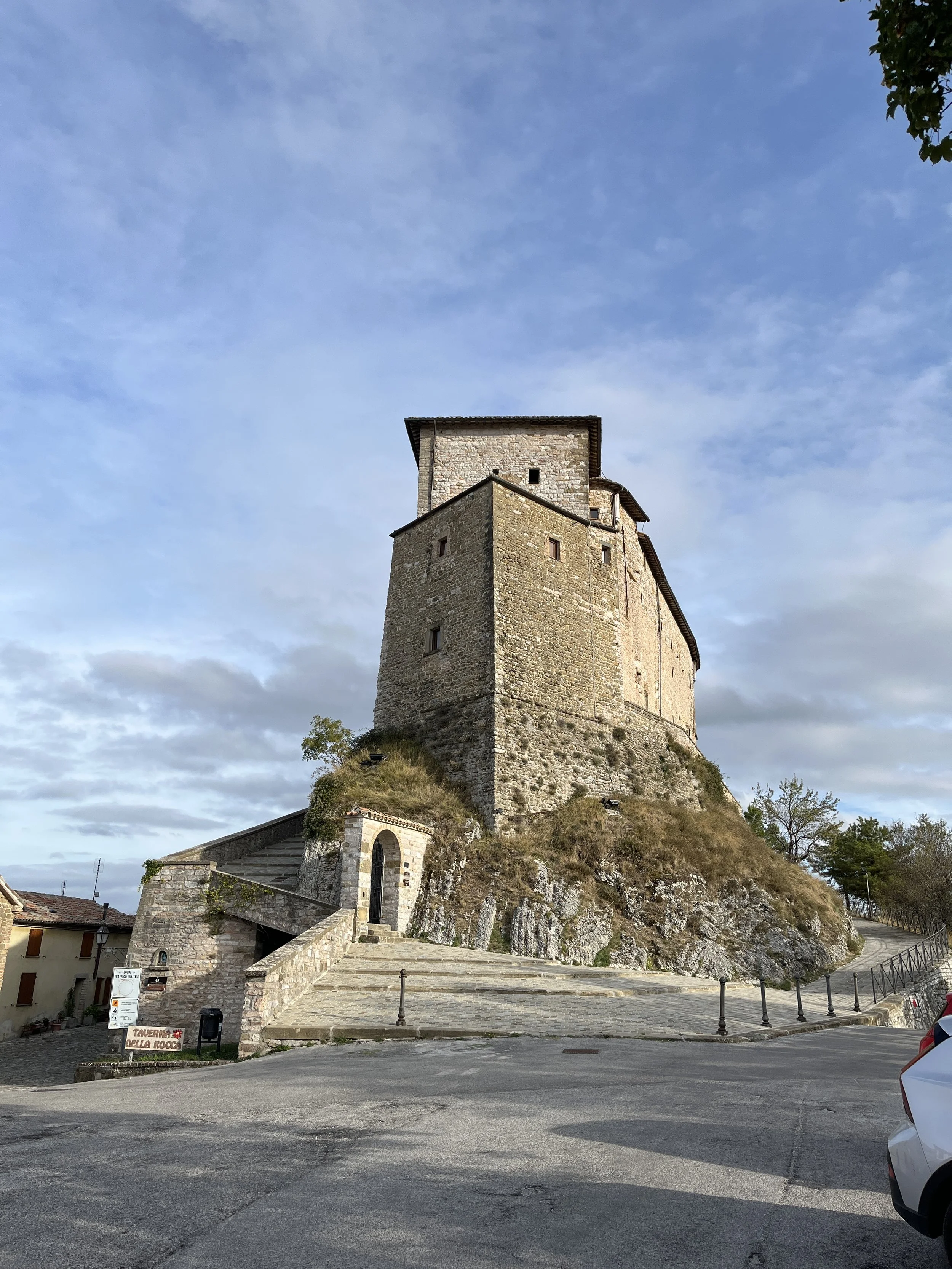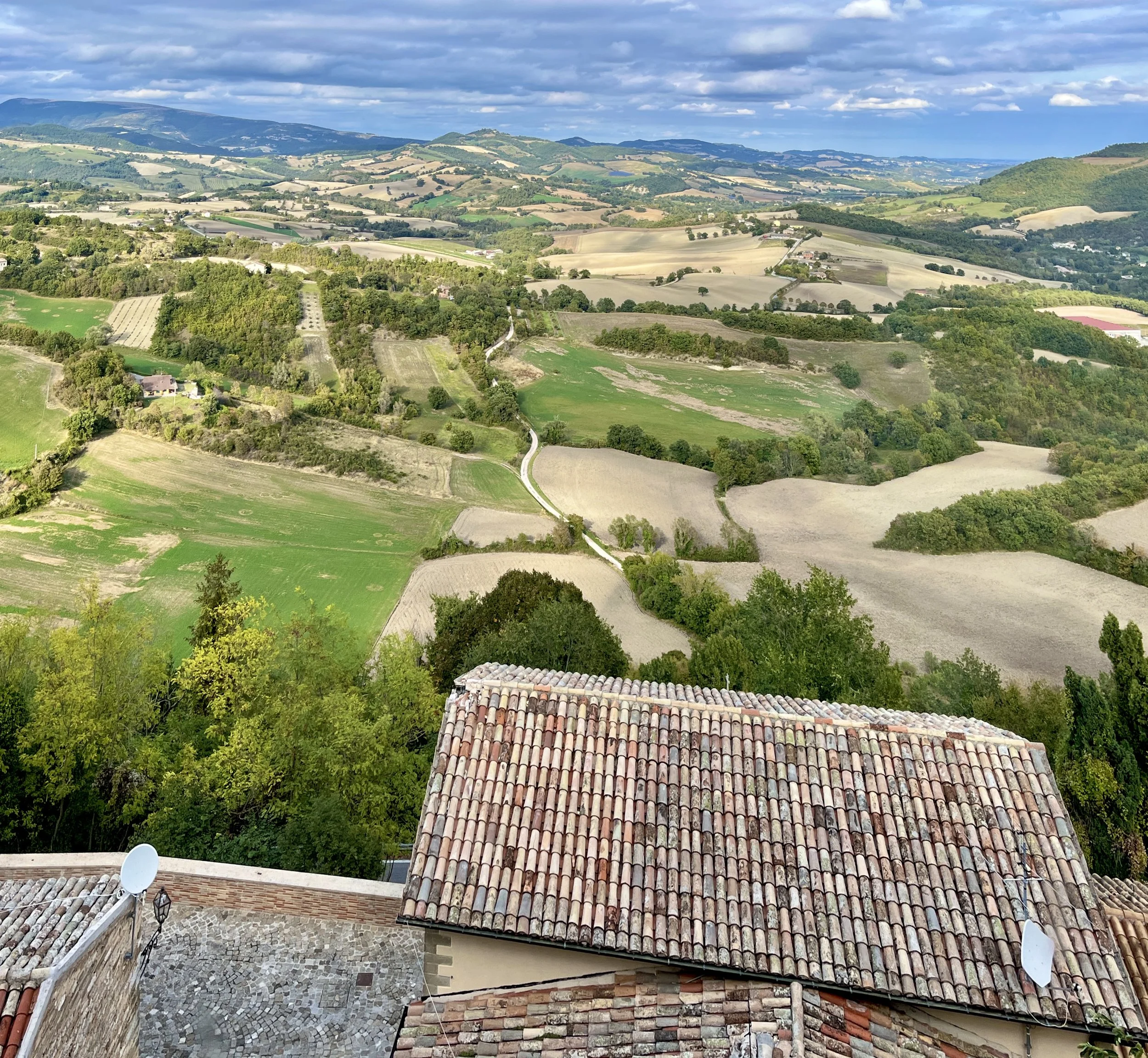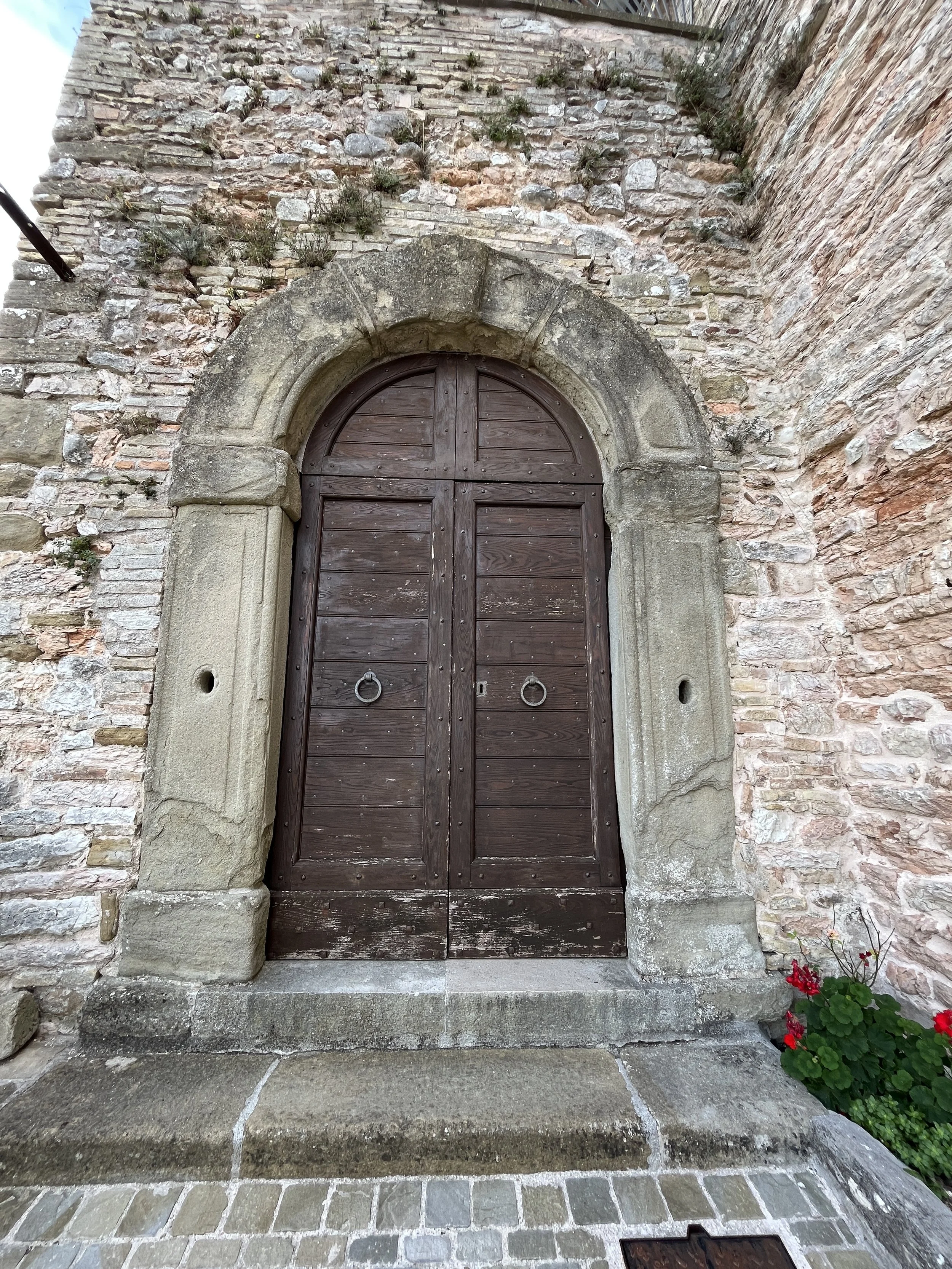Regional Marche on the Adriatic Coast
Living in Pesaro for two months, allowed me to explore nearby places like Fano, for its Roman ruins; Pergola, for its extraordinary excavated Roman bronze treasures; and castles: the mountain-top, 10th century fortress, Rocca Calascio in Frontone, and the Castello in Gradara, a medieval fortress and residence, surrounded by an historical village. This was the site of the bitter feud between the Montefeltro and Malatesta families, and the tragic romance between Paolo and Francesca that inspired not only Dante’s Divine Comedy, but also (it is said) Shakespeare’s Romeo and Juliet. Francesca Montefeltro lived at Gradara while her beloved, Paolo Malatesta, lived near the coastal town of Rimini, or so the story goes …
Images: The medieval town of Gradara below the castle; the extensive external Castello walls (with me and friend Nicoletta); two bedrooms – the first said to be Francesca’s; some interior scenes giving a hint of plays performed here in the past; a beautifully carved sled.
The town of Fano is both a beach resort and historic centre with many Roman ruins. Approaching the Old Town, you’re greeted by a tall statue of Caesar Augustus who was responsible for much of the Roman ruins still visible today, in particular, the Augustus Arch and the fortress walls that surround the city. However, Fano can be dated to approximately 200 BCE, and is known to have been occupied by Julius Caesar as a Roman outpost in 49 BCE.
Next, a map depicts the layout of the Old Town, entered through the Arch. Many walls show a mix of ancient and later construction methods and the cobblestone streets are mostly free of traffic and quiet. Where possible, Roman structures, such as arches and portals, have been preserved and incorporated into town planning. I’d intended to explore the beach, but arrived when Italy has its national fashion sales, and so a spontaneous shopping spree in Fano’s lovely boutiques derailed my plans. The Italian fashion sale season at the end of summer attracts shopperholics from all over Europe.
Images: Fano’s Roman ruins – city walls and streets; a sample of the city’s lovely doorways and churches.
One of the biggest drawcards in Pergola is its Museo Bronzi Dorati. When these guilded bronzes were discovered in 1946 by the Perruzzini brothers while digging a ditch, it sent shock waves through the world of archeology as no one had suspected that such a degree of expertise in guilded bronze existed, in particular as such metals were often melted down for coins or weapons by succeeding generations. In Italy, for obvious reasons, anything found underground, belongs to the State. By the time the excavation was complete, 318 pieces had been found. In 1949, a 10-year process commenced in Florence to put the puzzle together. Soon after the pieces were assembled, an ongoing tug-of-war started between Ancona and Pergola as to where the four statues would be exhibited. When I saw them, they were installed on a podium in a climate-controlled room in which an impressive video projected around the walls played the story of the bronzes’ construction, and their restoration. Ancient coin collections and magnificent paintings fill the remainder of the monastery, while statues are displayed in the courtyard.
Images: Pergola’s Museo Bronzi Dorati
To visit Frontone, you really need a car to drive through the scenic countryside and up the mountain to the fortress. Inside you’ll find a small souvenir store, a sample of the fashion of the day, some furniture, a small art gallery and an entertaining projected drama (with English subtitles) of scenes of daily life when the fortress was occupied. The battlements offer 360 degree views of the magnificent Italian countryside.
Images: Rocca Calascio in Frontone, showing the exterior and interior, views of the countryside and a scene from a short dramatisation of life in days gone by.
We’re off to Pesaro and Rimini next. Stay tuned :-)


